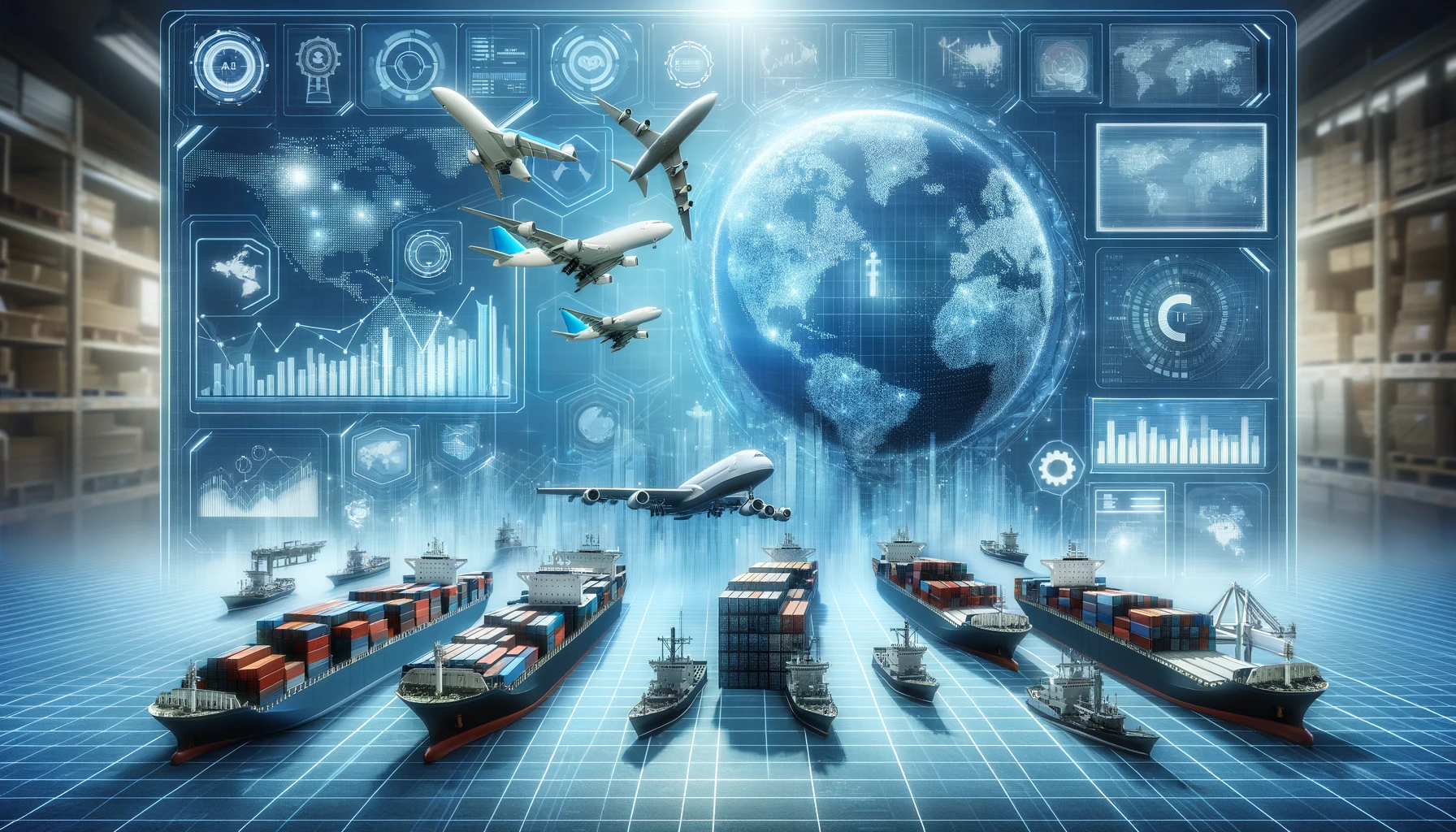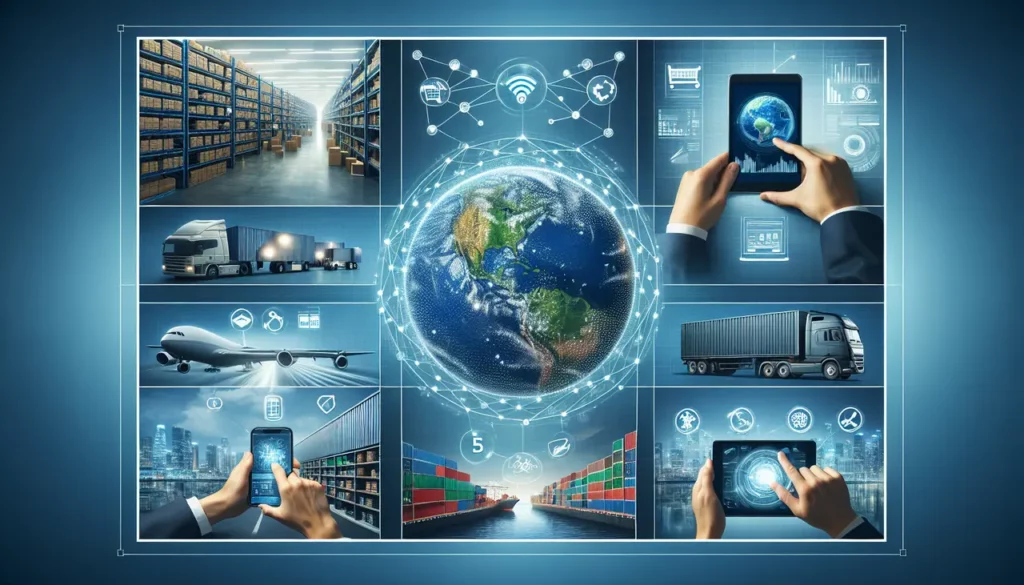Introduction to International Logistics in the Digital Era
Imagine you’re playing a massive global game, where every click you make on your computer sends items flying across the world. That’s pretty much what international logistics in the digital era are like. It’s the behind-the-scenes action that gets your orders from a warehouse in one country to your doorstep in another. With online shopping, digital tools track packages, manage shipments, and ensure your new gadgets arrive safely and quickly. This digital upgrade means logistics companies can handle more orders, respond to problems faster, and even predict where goods need to go before the order is placed. In short, international logistics today are smarter, faster, and more connected, making buying and selling across borders a breeze.

Expanding Global Reach Through Improved International Shipping
Improved international shipping practices are breaking down barriers and making it easier for online businesses to reach customers across the globe. Before, smaller companies might have felt limited to their local markets due to high shipping costs and complex logistics. Not anymore. Now, with advancements in logistics technology and better shipping strategies, even the smallest online shop can sell to customers in far-off places. This expansion means businesses can tap into markets they never thought possible, increasing their customer base and potentially boosting their sales. Plus, faster shipping times and reduced costs make customers more likely to buy from abroad, knowing they won’t have to wait weeks or pay a fortune to receive their items. This change is not just good news for businesses but also for customers who now have access to a wider variety of products.
Streamlined Supply Chains: The Impact on E-Commerce
E-commerce is booming, and at the heart of this growth is the streamlined supply chain, making sure your orders click from a screen to your doorstep faster than ever. How? International logistics have shifted gears, meshing traditional delivery methods with digital tracking and management systems. This means less waiting and more reliability for you, the buyer. In essence, when an online store optimizes its supply chain, it can move goods quicker, cut down on errors and reduce costs. This efficiency not only speeds up the delivery but also allows for competitive pricing, flexibility in inventory, and the ability to respond swiftly to market changes or consumer demands. So next time you marvel at how fast your online order arrives, remember, it’s the streamlined supply chains behind the scenes, making your digital marketplace experience smoother.
The Role of Technology in Enhancing International Logistics
Technology is a game-changer in the world of international logistics. Thanks to advancements in tech, shipping goods across borders is becoming more efficient and less costly. Here’s how technology is shaping the industry:
1. Tracking Systems: GPS and RFID (Radio Frequency Identification) tags let businesses track their products in real-time from anywhere. This means less worrying about where your shipment is and more assurance it’s on its path.
2. Automation: Robotics and automated systems are speeding up the sorting and packing processes in warehouses. This reduces human error and saves time, making the whole supply chain smoother.
3. E-commerce Integration: Online platforms are now directly linked with logistics operations, making it easy for businesses to manage inventory, process orders, and ship products with just a few clicks.
4. Data Analytics: Big data helps predict logistics trends, understand customer behavior, and optimize routes. This means companies can plan better and reduce unnecessary expenses.
5. Enhanced Communication: Digital platforms improve communication between shippers, carriers, and customers. Clearer communication leads to fewer mix-ups and happier customers.
In short, technology is not just changing; it’s revolutionizing international logistics, making it faster, more reliable, and cost-effective.
Cutting Costs and Increasing Efficiency in Global Trade
In today’s hyper-connected world, the ability to cut costs and boost efficiency in global trade is more crucial than ever. So, how are international logistics stepping up to this challenge? Firstly, by adopting technology. Think drones for swift package delivery and blockchain to secure transactions. Next, there’s the practice of bulk shipping, which drastically reduces costs by moving large quantities of goods simultaneously. Also, the optimization of routes plays a significant role. By analyzing data, companies can now choose the most fuel-efficient and quickest paths across the seas and skies. Don’t forget about automation. From warehouses manned by robots to self-driving trucks, automation is slashing labor costs and speeding up processes. Lastly, international logistics firms are increasingly going green. More eco-friendly practices aren’t just good for the planet; they often mean lower fuel costs and can improve a brand’s image. All these strategies are reshaping the digital marketplace, making global trade more efficient and cost-effective.
Enhancing Customer Experience in the Digital Marketplace
In today’s online shopping world, how fast and safe an item gets to your doorstep matters a lot. Companies are always looking for ways to make you happy and keep you coming back. That’s where international logistics steps in to change the game. By speeding up deliveries from any corner of the world, ensuring your package arrives in perfect shape, and even letting you track your order from miles away, logistics companies are making shopping online a smoother ride. They’re also getting smart, using data to figure out faster routes and prevent lost items. This means you get what you want when you expect it, making your shopping experience a whole lot better. Plus, with easy returns and real-time updates, you’re always in the loop and less worried about your order. In short, international logistics is not just about moving items; it’s about moving them in a way that makes you smile and hit that ‘buy again’ button.
The Importance of Data Analytics in International Supply Chains
Data analytics is now the backbone of international supply chains. By analyzing vast amounts of data, companies can predict demand, optimize routes, and cut down costs. This means they can deliver goods faster and more efficiently than ever before. For example, by using data analytics, a company can anticipate which products will be in high demand in different parts of the world. This lets them stock up in advance, avoiding last-minute rushes and saving money on expedited shipping. Also, data analytics helps in finding the fastest and most cost-effective shipping routes. This is crucial because international logistics involve complex routes that can change due to weather, politics, or even global health issues. By optimizing these routes, companies ensure products reach their destination on time, keeping customers happy. In a nutshell, data analytics is not just important; it’s essential in today’s digital marketplace for keeping international supply chains running smoothly, quickly, and efficiently.
Overcoming Challenges: Customs, Regulations, and International Compliance
Navigating through customs, tackling regulations, and complying with international laws are sizable challenges for any business stepping into the digital marketplace. Yet, overcoming these obstacles is not just about avoiding penalties; it’s a critical move to ensure smooth operations and trust. Each country has its own set of rules, and what works in one might be totally off-limits in another. Key to this is staying informed. Businesses often team up with knowledgeable local partners or invest in specialized software to keep track of these ever-changing regulations. This approach not only helps in dealing with the paperwork and legal jargon but also in building relationships with local authorities, which can be invaluable during clearance processes. Understanding these complexities is a stepping stone to global success, ensuring products reach their destinations without hiccups, and maintaining the flow of the digital marketplace.
Case Studies: Successful Integration of International Logistics in Digital Businesses
Many digital businesses have made it big by integrating international logistics smoothly into their operations. Let’s look at a few:
- Amazon has set the gold standard by using comprehensive logistics solutions. They manage an extensive network of warehouses and use advanced algorithms to predict buyer needs, ensuring products are already at the nearest warehouse before you even click ‘buy’. This quickly gets products to consumers, regardless of where they are in the world.
- Alibaba, the giant from China, has mastered the art of streamlining cross-border transactions. By creating an ecosystem that supports both small and big sellers, they provide a seamless experience for users globally. Their logistics arm, Cainiao, uses data to optimize shipping routes and reduce delivery times drastically.
- Etsy, known for handmade and vintage items, supports sellers by offering streamlined shipping solutions. They’ve partnered with global carriers, enabling sellers to ship products worldwide with ease. This opens up markets and allows even small sellers to reach customers across the globe.
- Zara, though primarily a fast-fashion brand, has a tight integration with international logistics. Their just-in-time manufacturing and distribution strategy means they can get the latest trends from the factory to store shelves worldwide in record time, keeping inventory costs low and customer satisfaction high.
- Shopify, a platform empowering e-commerce businesses, offers tools and resources to manage international logistics. From calculating duties and taxes to providing a wide range of shipping options, they simplify the complexities of global trade for sellers.
By leveraging the power of international logistics, these digital businesses demonstrate how connecting products to consumers across the globe can be seamless and efficient, transforming the digital marketplace landscape.
Future Trends: What’s Next for International Logistics in the Digital Marketplace
The future of international logistics in the digital marketplace is shaping up to be a thrilling ride, driven by innovation and technology. Here’s a quick dive into what’s next. Data analytics is changing the game, letting companies make smarter, faster decisions by understanding patterns and predicting trends. Automation and robotics are streamlining operations, from packing to shipping, slashing costs, and boosting efficiency. The rise of e-commerce is pushing for quicker, more reliable delivery methods. As consumers demand faster shipping, logistics companies are turning to drones and autonomous vehicles to keep up, promising deliveries that are not just faster but also environmentally friendly. Lastly, blockchain technology is enhancing transparency and security, making every step of the supply chain visible and trustworthy. These trends are not just future talk; they’re rapidly becoming today’s reality, reshaping how goods move around the globe in the digital age.

